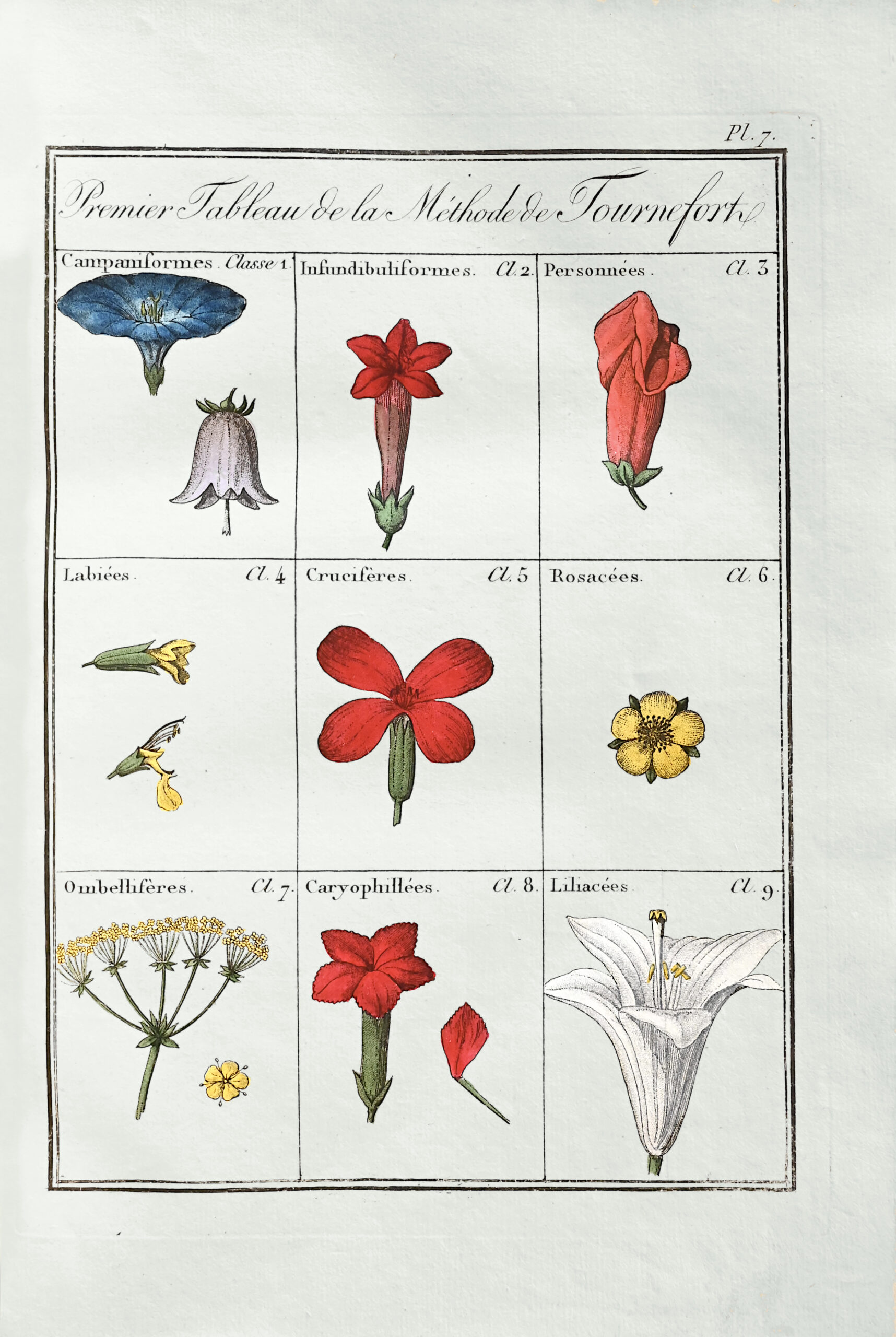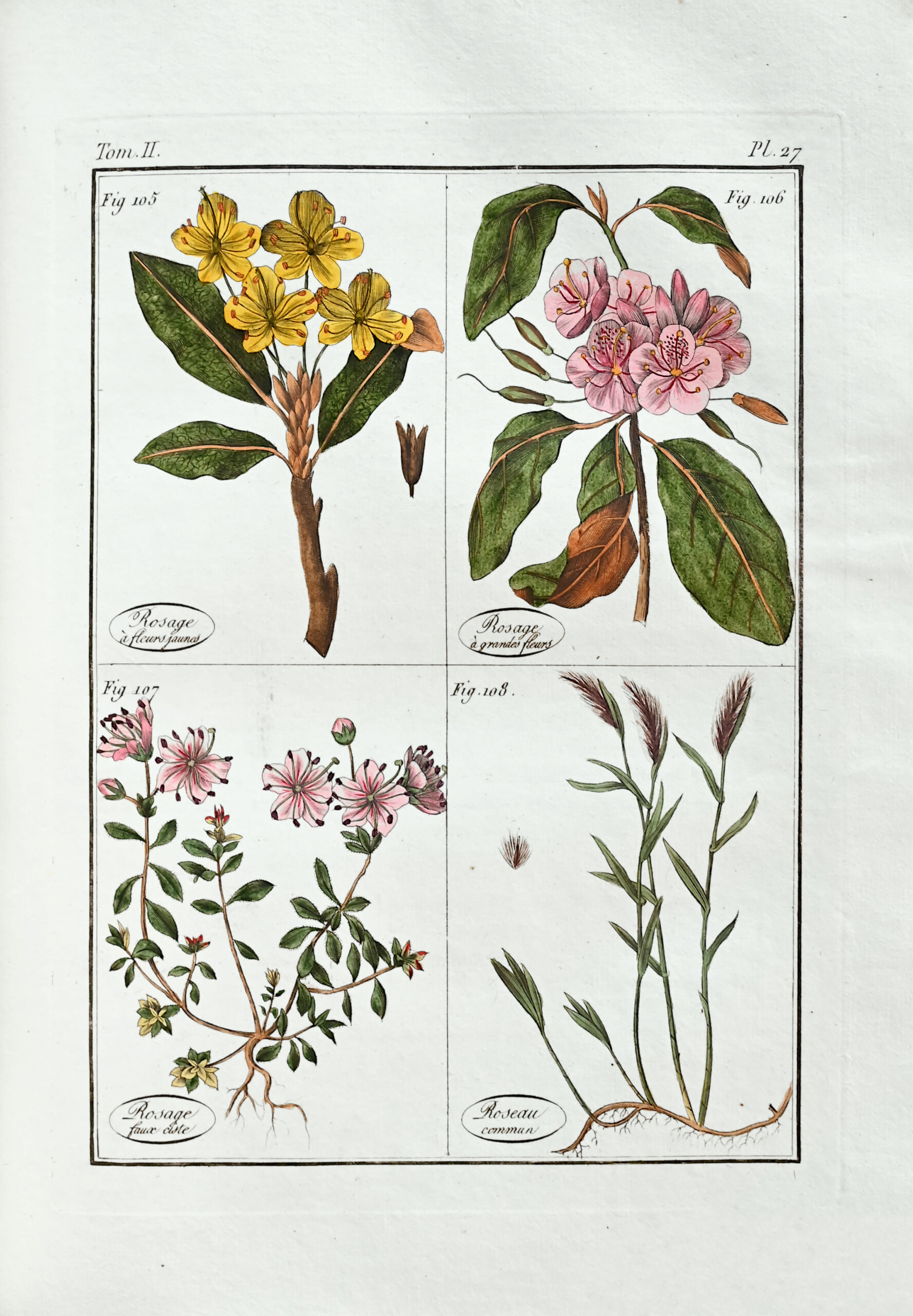Paris, from the author, 1807-8.
2 volumes 4to of: I/ (2) ll. including the half-titre and the title, viii pp, 266 pp, 72 hand-colored plates including the engraved frontispiece; II/ (2) ll. 278 pp, 61 hand-colored plates, (1) l. of errata. The plates are protected by silky paper. Illustrated with 133 watercolored engravings. Bound in half-roan, spines finely decorated, lettering-pieces in old red morocco, scratched on the cover. Contemporary binding.
240 x 178 mm.
First edition of the first great French pharmacopeia of the nineteenth century.
Pritzel 509; Graesse, Trésor de livres rares, VI, 160; Nissen BBI 1674; Stafleu-Cowan TL2 9496.
This work is the result of the collaboration of Joseph Roques, an eminent physician and botanist, and Jacques Grasset de Saint-Sauveur, a prolific aquafortist, draftsman, and polygrapher.
“M. Roque preceded his work with a detailed description of the various external parts of plants; there he successively examines the roots, the stems, the leaves, the flowering parts, the sexual organs […]; and, we say it with frankness, it is impossible to give, on these various objects, a more methodical, more concise and clearer overview. A brief analysis of the particular methods of Tournefort, Linné and Jussieu, comes after these preliminary notions. In order not to be guilty of the same defects which degrade the works of his predecessors, we have noticed with pleasure also that M. Roques has severely proscribed all the plants whose properties had not been rigorously demonstrated by experience, and has rehabilitated some of them which a light and superficial examination had caused to be rejected; and in order to put the study of these plants within the reach of the greatest number of readers, M. Roques has arranged them in alphabetical order; at the same time, the author has taken care to place at the end of his work two tables in which the plants are arranged according to the natural method of Jussieu and according to the system of Linné […].
Roques then traces in a precise and faithful way its external characteristics; he indicates the place where it is found, its analysis, its properties, the various circumstances in which it must be used as a medicine, and points out the poisonous principles which it can contain; finally each plant is accompanied by a colored figure, which renders it with a truth and striking fidelity. Besides, the form of the work refuses entirely to be analyzed; but in general one can say that the greatest number of articles has been treated with much knowledge. One always notices a wise and judicious mind which rejects any kind of hypothesis, and wants to be guided only by the facts and the sure course of observation, which is not usually one of the advantages that most medical subjects can boast.
We will not dwell further on this work; its real merit speaks for it…” (Bulletin des sciences physiques, 1810, pp. 266-270)
The abundant illustration consists of a title-frontispiece and 132 engravings, finely hand watercolored at the time by grasset de saint-sauveur.
A very fine copy of this abundantly illustrated botanical work, preserved in its contemporary binding.
Provenance: from the Library of Guitet pharmacist in Angers with ex libris with his stamp on the half-title and titles. It is probably Benoît-François Guittet (1771-1860) military pharmacist of Angers and one of the founders of the savings bank.








